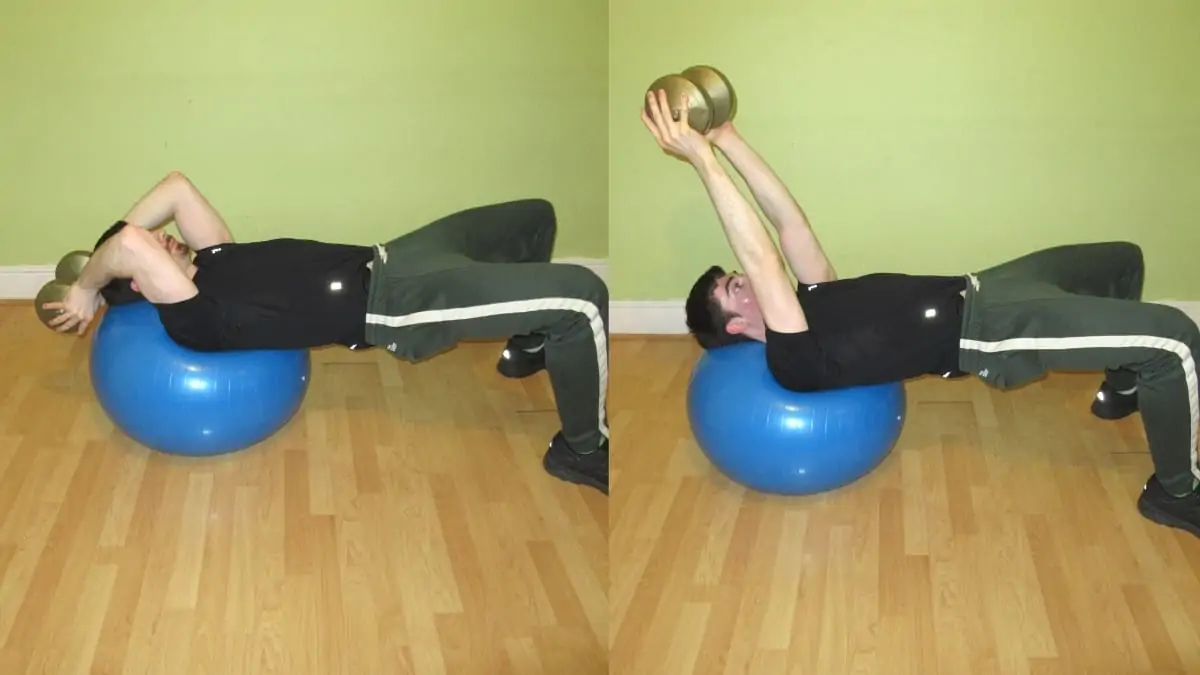French curls are an excellent exercise for strengthening your triceps muscles because they work all three tricep heads, which helps the backs of your arms to look lean, toned, and muscular.
The stability ball French press is the same as the traditional French press in terms of lifting technique; the difference is that the exercise ball variation challenges your core muscles to a greater extent than the regular version.
This guide shows you how to do 5 kinds of French presses on a stability ball and then discusses the pros and cons of each variation.
Related: KB French press
Stability ball French press exercise details
- Also Known As: Swiss ball French press
- Main Muscles: Triceps
- Exercise Type: Strength
- Exercise Mechanics: Isolation
- Difficulty Level: Intermediate
- Equipment Needed: Stability ball, dumbbells
How to do a French press on a stability ball

- Grab a relatively light dumbbell by its ends. Alternatively, hold the dumbbell handles with both of your hands.
- Sit on the ball and then roll down the ball so that your upper back is now in contact with the ball and your legs are out in front of you.
- Press the weight up so that it’s positioned directly over your head.
- Lower the dumbbell behind your head by bending your elbows.
- Descend with the weight until you feel an intense stretch in your triceps.
- Reverse the motion by flexing your triceps until your elbows reach complete extension.
- Repeat for 3-5 sets of 10-20 reps.
Stability ball French press variations
Now that you’ve seen how to do a lying French press on a stability ball, it’s time to learn how to perform the upright variations of the exercise and how they compare to the lying version.
Swiss ball French press (two weights)
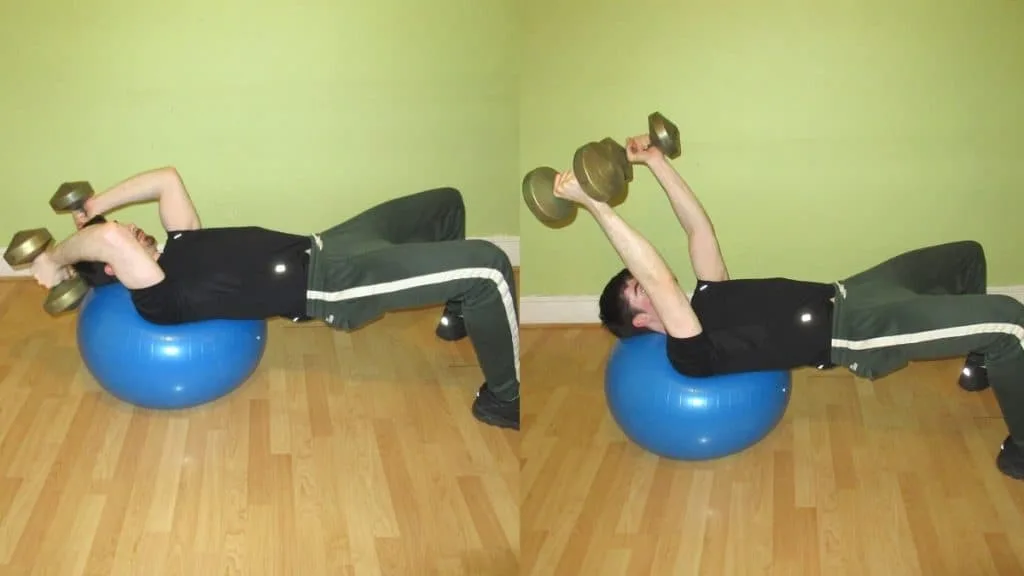
If you’re no longer a tricep training beginner and want to challenge the backs of your arms with more resistance, then it’s a good idea to perform the Swiss ball French press with a dumbbell in each hand.
Lifting two independent weights is useful for sculpting symmetrical upper arms because it ensures that both of your triceps are getting equal amounts of work.
Stabilizing two dumbbells also requires more core strength than balancing one, so the two-arm exercise ball French press is a great exercise for challenging your abs while taxing your triceps.
When performed in a lying position, the two-weight Swiss ball French press is exactly the same as the one-dumbbell version that you saw in the initial tutorial.
If, however, you want to perform the movement in an upright position to make it even more triceps-focused, then check out the next stability ball French press variation.
Seated stability ball French press
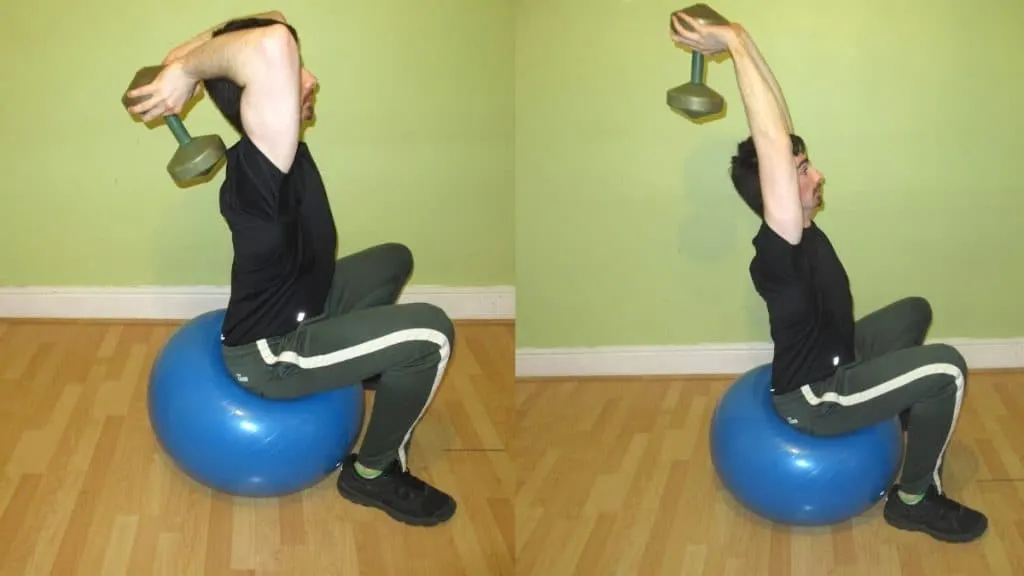
Performing a seated dumbbell French press on a stability ball challenges your abs more than the weight bench version because stability balls don’t have a backrest, whereas weight benches do.
The absence of a back pad means that whenever you do any kind of Swiss ball exercise, your abs have to contract in order to keep your torso stable and upright.
However, sitting on the ball is still less ab-intensive than lying on the ball. So if you want to focus primarily on working your triceps but still want to train your abs a bit, then the seated stability ball French press is the way to go.
You can, of course, perform separate ab exercises in a different workout or later on in the same session, so it’s not as if you have to work your abs in every single strength training exercise that you do.
One arm stability ball French press
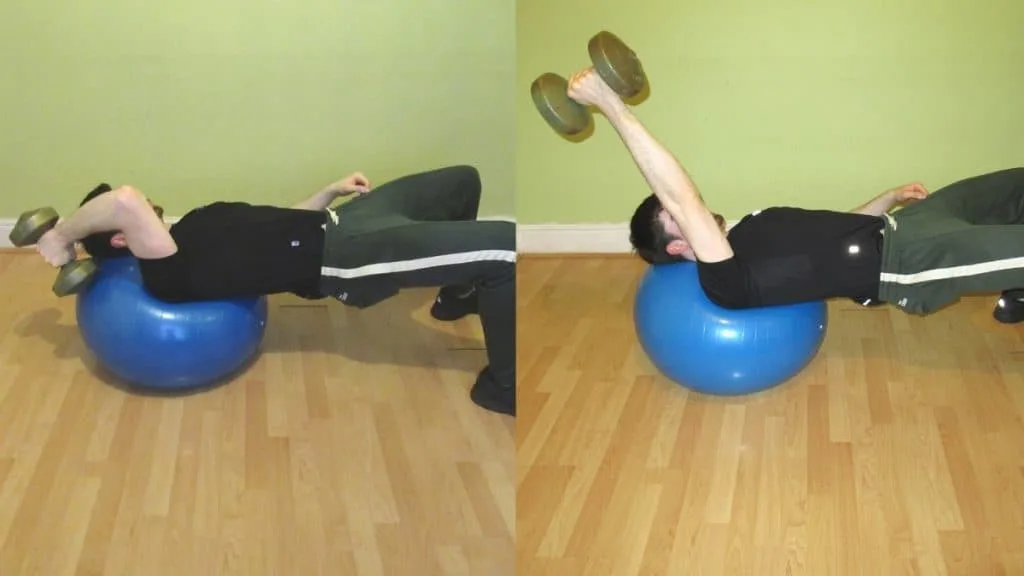
Performing a single arm dumbbell French press on a Swiss ball works your core isometrically and trains your triceps dynamically.
Since you’re training unilaterally, which is to say working each arm separately, the single arm stability ball French press is naturally an effective exercise for improving your triceps symmetry, which in turn helps to make your upper arms more proportional in both strength and size.
So if you have a disparity in size or strength between your triceps, then the one arm stability ball French press should be your go-to upper arm exercise.
Better yet, for those who enjoy training their core, when you train unilaterally, you end up doing twice the number of sets because you’re working one arm at a time. This means that, while your triceps don’t get any extra work, your abs do because both sides of your abs have to contract regardless of whether you’re working your right arm or your left arm.
EZ bar stability ball French press
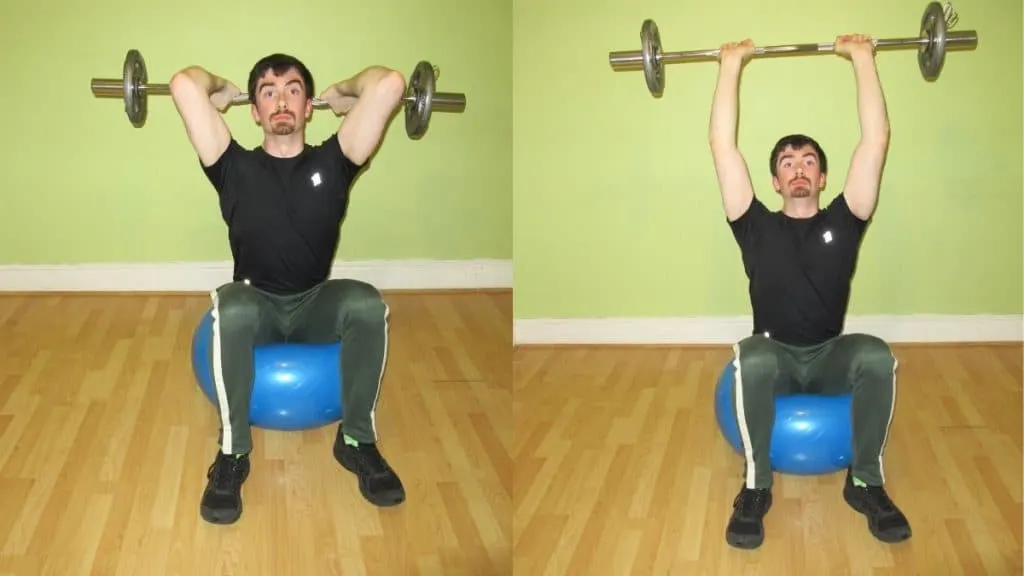
Doing a French press with an EZ bar is a brilliant way to maximize muscle growth because bars enable you to lift heavier weights than dumbbells, which in turn lets you overload your triceps with more resistance.
Unlike straight bars, EZ bars also have semi-pronated grips, which place your wrists in a natural gripping position and thus make the movement more joint-friendly.
The only downside is that working your upper arms with bars leaves you open to developing muscular imbalances. This is because your stronger side is always likely to do more work when both arms are lifting the same training implement.
For this reason, it’s a good idea to do some dumbbell work in addition to your barbell training if you want to ensure that your triceps are symmetrical as well as lean and muscular.
Read More: Med ball French press
Conclusion: Is the stability ball French press right for you?
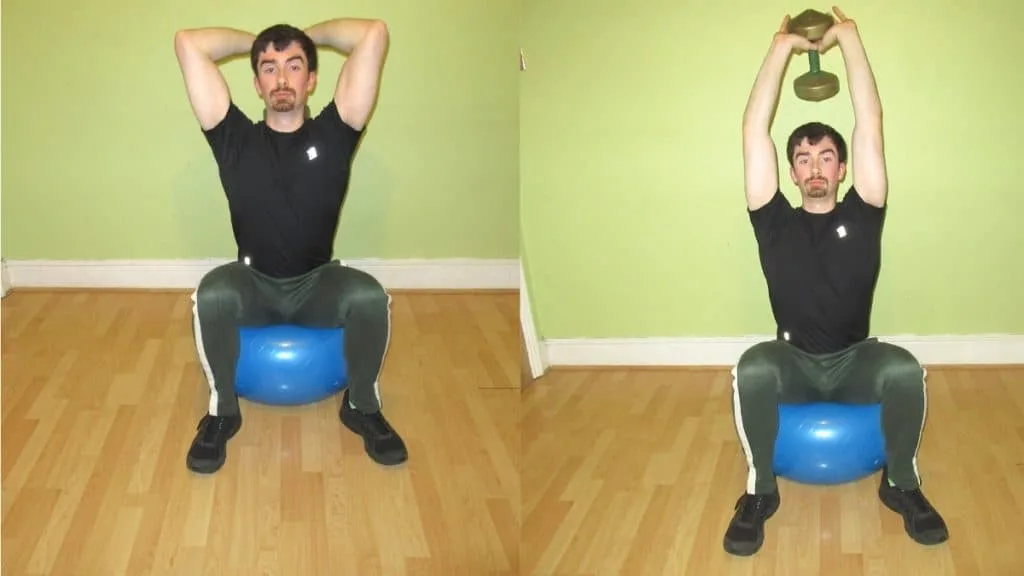
Does the stability ball French press train your core as much as your triceps?
No, it doesn’t.
But the Swiss ball French press still gives your abs some decent stimulation while making your triceps do most of the work. As such, if you want to improve your isometric ab strength (the ability of your abs to maintain a muscle contraction) while simultaneously strengthening your triceps, then the stability ball French press is a great exercise to include in your workout routine.
Unlike other types of French presses, the exercise ball French press doesn’t require any bulky or expensive equipment. In fact, all you need to start getting results is a relatively light pair of dumbbells and an exercise ball, which are two pieces of equipment that you can use for many, many other resistance training exercises.

